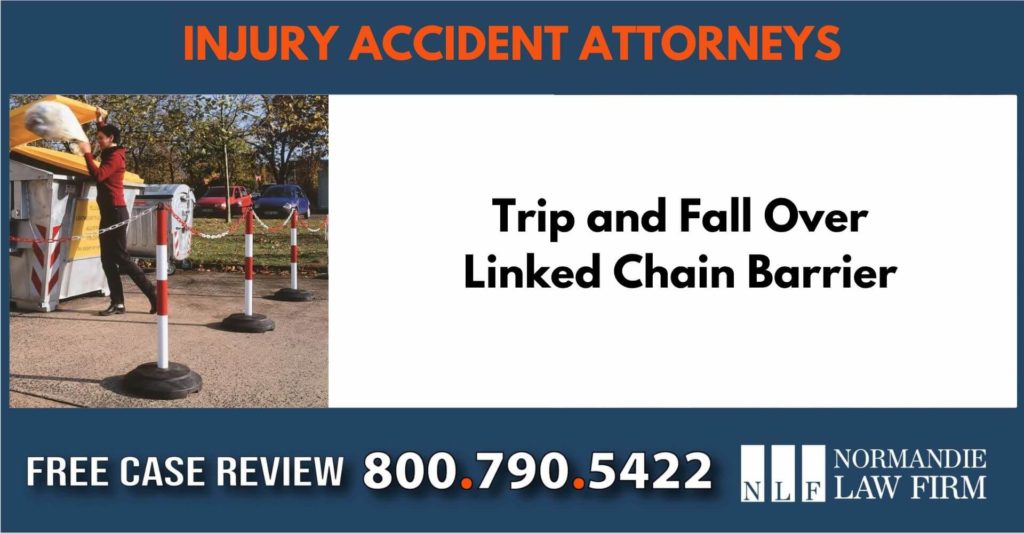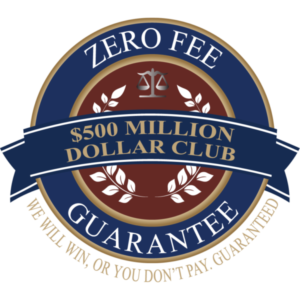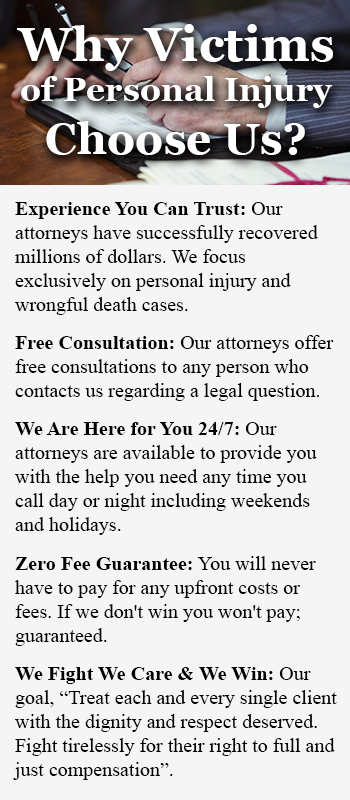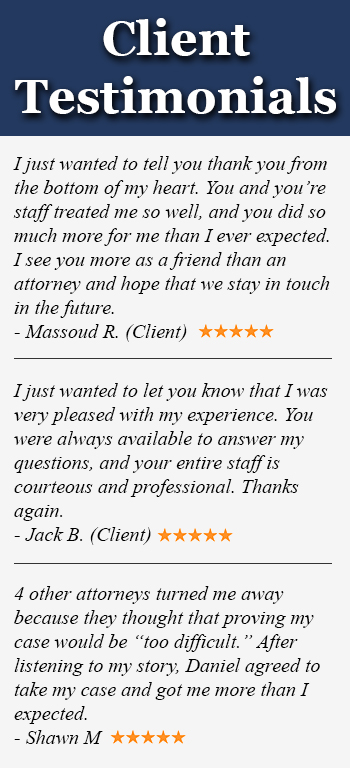Linked chain barriers are made of plastic or metal linked chains that are connected between posts. They are used to restrict access to certain areas, keep people away from hazards, or create a walkway to lead people in certain directions. You often see these barriers in outdoor areas like parking lots, shopping malls, concert venues, and sports stadiums.
These objects serve a useful purpose, but if they are improperly designed or not used in the right way by the property owner, they can actually be the source of injuries if someone trips over them. If you tripped and fell over a linked chain barrier, you may be entitled to restitution in the form of monetary compensation. To learn more about your rights as a victim of negligence, contact us to discuss your case with a trip and fall accident lawyer.
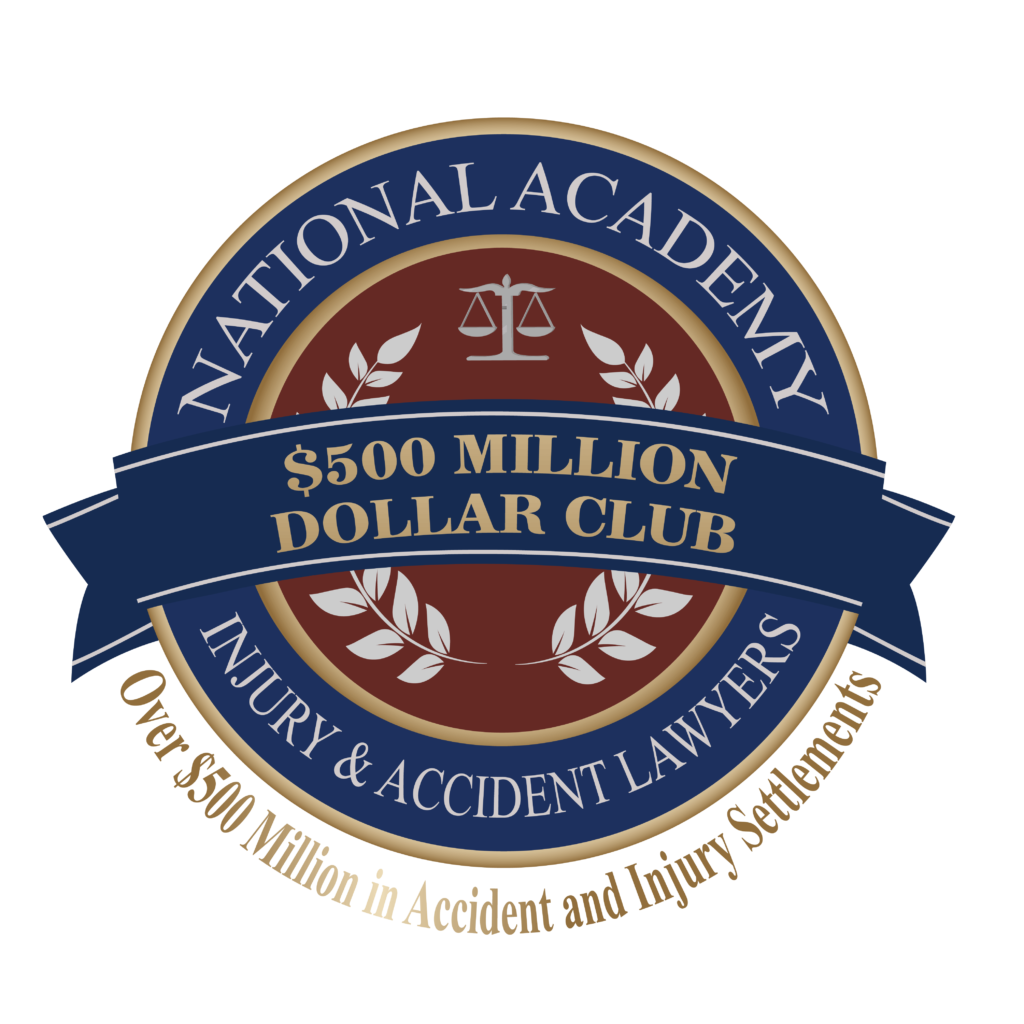
Our Recent Verdicts and Settlements
$2.5 Million
$1.1 Million
$1.5 Million
$600,000
$525,000
$734,851
Your Right to Sue for Tripping over a Linked Chain
The mere presence of a linked chain and you tripping over it doesn’t give you the right to file a lawsuit. Your right to sue is based on the fact that the owner of the property failed to use a safe product or failed to use it in a safe manner.
How does this work when it comes to a barrier that uses linked chains? For one thing, linked chain barriers need to stand out and be clearly visible from long distances. They must also be visible at night or when there is a lack of natural light (rainy days, for example). With that in mind, many of these chains are brightly colored (red or yellow, for example). Or, you can opt to use black linked chains that are hung between brightly colored posts, as the contrast in colors will stand out to people. In many cases, these barriers are also accompanied by large signs with bright colors, and this is another way to draw attention to the fact that there is a series of chains you can trip over.
If the owner / operator of a property failed to take these measures, meaning the linked chains are not conspicuous, you can easily miss seeing them and suffer injuries from a trip and fall. As a result, you have the right to file an injury claim with the property owner and seek compensation like medical expenses, lost income, and pain and suffering. For more information on suing for injuries from tripping over a linked chain, give us a call to schedule a free case review.
Potential Injuries from an Unexpected Fall
Any type of the fall has the potential to cause one or more injuries, but many people assume that these are minor cuts and scrapes. However, falling down unexpectedly due to an object that’s hard to see puts you at risk of serious bodily harm. Take a look at just some of the injuries we typically see on victims who trip and fall in public places:
- Fractured or dislocated shoulder
- Neck and back injuries
- Concussion and other forms of head trauma
- Hip fracture
- Shattered kneecap
- Tearing of tendons, muscles, and ligaments
- Damage to the internal organs
- Paralysis caused by nerve damage
- Broken tailbone
- Spinal cord damage
- Chronic pain
By filing an accident claim, you can obtain compensation for your medical bills and other financial losses. This is a critical part of recovering from a trip and fall accident and moving forward in a positive direction. For a free consultation with a fall injury lawyer, contact our office.
Trip and Fall Lawsuit Case Values
Trip and fall lawsuits tend to have high values due to the severity of injuries we often see with these accidents. Most of our clients receive $75,000 and above, with the majority of settlements falling between $125,000 and $1,500,000. We also have cases that exceed $3,000,000 in damages due to the victim ending up with permanent disability, which has a devastating impact on many areas of their life. Then again, it’s perfectly acceptable for some cases of trip and falls to settle for $50,000 or less if the victim’s injuries are relatively minor. Due to these and other factors, there is no such thing as an average trip and fall case value.
Statute of Limitations to File a Trip and Fall Claim
If negligence by a property owner caused you to trip over a linked chain, you have anywhere from 6 months to 2 years to file a lawsuit.
If you were injured on property that’s owned or operated by a private entity, like a homeowner, apartment leasing company, shopping center, etc., your deadline to sue for a trip and fall is 2 years. But these accidents can also take place on public properties like public schools and parking lots for government-owned buildings. If an entity of the government is liable an accident, the victim has 6 months starting from the accident date to file a claim.
Procedures to file a government claim are very different than the steps you would take to file a personal injury lawsuit. These and other complications can make it difficult for those with trip and fall injuries to obtain the compensation they deserve. Reaching out to a lawyer with experience in trip and fall claims is the best way to achieve justice if you fell and injured yourself on someone else’s property.
Contact Normandie Law Firm
Tripping over something isn’t just a bit of comedy in movies; it’s an accident that can cause catastrophic injuries to people of any age. That’s why we are dedicated to fighting for the right of victims who are injured due to a property owner’s failure to exercise reasonable care.
Our commitment to fall accident victims includes the Zero Fee Guarantee – a policy where you receive free legal services for the entire duration of your case. We can do this by asking the other side to cover all legal fees as a part of the payment you are owed. We only receive payment by winning your case, so if we fail to recover your settlement, you walk away without paying us a single cent.
To learn more about the Zero Fee Guarantee and all the other ways we can assist you, please schedule a time to speak with a linked chair barrier trip and fall attorney.
Other Pages on Our Website Related to This Topic
Trip and Fall from Trash in the Street Lawsuit Attorney
Can I Sue if a Neighbor’s Tree Fell on my House?

